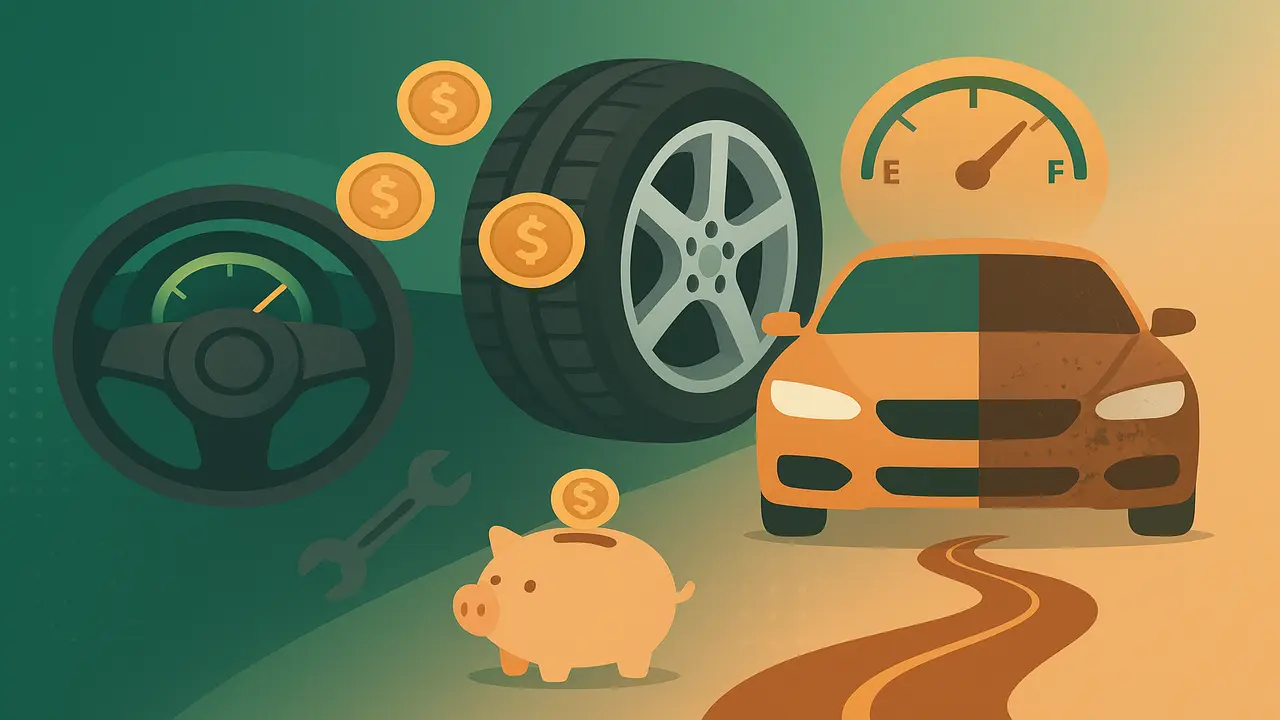A person’s driving habits impact how long their car lasts and how much maintenance it requires. Good driving habits can prolong a car’s lifespan and save maintenance costs, whereas poor driving habits can cause excessive wear and tear and raise repair costs. Knowing how driving habits affect a car’s condition enables owners to make well-informed decisions that save money and enhance performance. This article examines the effects of various driving behaviors on maintenance costs and advises cutting back on wasteful spending.
Aggressive Driving and Its Consequences
Rapid lane changes, hard braking, and abrupt acceleration are examples of aggressive driving that put undue strain on certain auto parts. Brake pads and rotors might deteriorate more quickly with repeated severe braking, necessitating more frequent replacements. Aggressive acceleration also increases the chance of expensive repairs by placing more strain on the engine and transmission. Reducing wear and fuel efficiency can be achieved by driving smoothly and anticipating traffic.
Excessive Speeding
High-speed driving puts more mechanical strain on the engine, tires, and suspension to increase fuel consumption. The engine must work harder at higher speeds, which causes moving parts to wear down more quickly. Additionally, because of greater friction and heat accumulation, tires deteriorate quickly. Long-term maintenance expenses can be decreased by keeping a steady pace and obeying speed limits.
Improper Use of the Transmission
In vehicles with manual transmissions, inappropriate shifting—such as riding the clutch by placing a foot on the pedal or shifting gears too forcefully—can result in early clutch and transmission component degradation. Regularly switching from drive to reverse while the car is still moving can harm the transmission system in automatic vehicles. The transmission’s lifespan and repair costs can be increased by properly using the gears and letting it run smoothly.
Frequent Short Trips
A vehicle’s engine and batteries may suffer from short drives, particularly in cold weather. The engine does not achieve its ideal operating temperature on short trips, which results in inefficient fuel combustion and excessive carbon buildup. Furthermore, there is insufficient time for the battery to recharge, which may reduce its longevity. Battery efficiency and engine health can be preserved by taking longer trips occasionally and combining errands into a single trip.
Overloading the Vehicle
Unnecessary strain on the engine, suspension, and braking system results from carrying too much weight. Additionally, it increases tire wear and decreases fuel efficiency. Regularly overloading the car can cause important parts to break too soon, necessitating expensive repairs. Maintaining the vehicle’s load within the manufacturer’s recommended range can help to maintain performance and longevity.
Improper Tire Care
Uneven tire wear can also result in poor handling and the necessity for early replacement. Regular tire pressure checks, tire rotations, and appropriate wheel alignment can all help to save money on maintenance and increase safety.
Using the Wrong Fuel or Oil
Engine knocking and decreased efficiency can result from using lower-quality fuel than is advised. Likewise, overheating and greater friction can result from using the incorrect engine oil. Optimizing engine efficiency and avoiding needless repairs are ensured by adhering to the manufacturer’s fuel and oil standards.
Driving in Harsh Conditions
Extreme weather conditions, including intense rain, snowfall, or intense heat, can hasten the wear of several parts of a vehicle. While hot weather can lead to overheating problems, cold weather can thicken engine oil, making it more difficult for the engine to run smoothly. Wear and tear can be reduced by taking preventative measures like using the right lubricants and letting the engine warm up in cold weather.
Conclusion
Driving patterns have a significant impact on a car’s maintenance expenses. Higher repair costs might result from aggressive driving, excessive speeding, and skipping regular maintenance. Car owners can drastically save maintenance expenses and increase the longevity of their vehicles by implementing smooth driving practices, taking quick care of small problems, and adhering to manufacturer guidelines. In addition to improving safety, driving with awareness can result in long-term financial benefits.
Also Read
- Nearly 30% of UK Drivers Believe Car Tax Should Be Based on Mileage — Survey
- Why Planes and Boats Escaped the Luxury Tax But Cars Didn’t
- Australia’s Headlight Confusion: Authorities Warn Drivers After Viral $250 Headlight Rule Goes Wild Online
- 2025 Hyundai Venue Facelift Launched in India – Full Details, Variants, and Price
- Royal Enfield Bullet 650 Unveiled at EICMA 2025: A Classic Legend Returns
